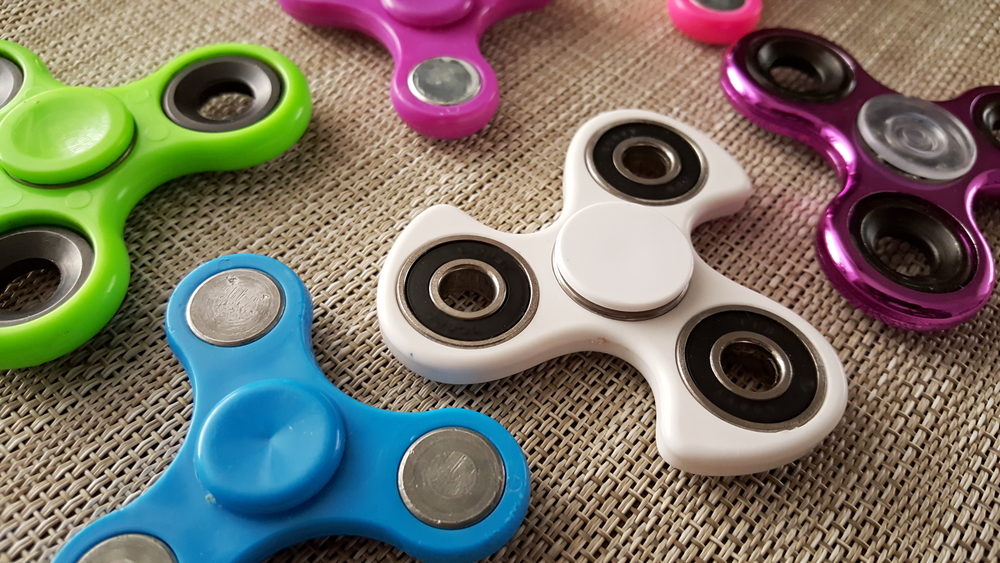High Lead Levels Found In Target Fidget Spinners, Watchdog Group Warns

Fidget spinners are a popular toy among children nationwide, but a new study suggests that certain products sold at Target stores nationwide may contain extremely high levels of lead, which exceed federal guidelines for amounts allowed in toys for children 12 years of age and younger.
The U.S. Public Interest Research Group (PIRG) issued a press release on November 9, warning consumers of the potentially harmful levels of lead exposure in Target’s Fidget Wild Premium Spinner and Fidget Wild Premium Spinner Brass models.
Laboratory testing by PIRG found that the Fidget Wild Premium Spinner Brass models tested for 33,000 parts per million of lead and the Fidget Wild Premium Spinner Metal tested for 1,300 parts per million of lead.

Learn More About
Children diagnosed with lead poisoning after exposure to peeling or chipping lead paint in a rental home may be entitled to financial compensation and benefits.
Learn More SEE IF YOU QUALIFY FOR COMPENSATIONThe federal guidelines for toy manufacturers states that any toy that is marketed or intended for children under the ages of 12 years old is prohibited from containing more than 100 parts per million of lead..
After discovering the potentially toxic and dangerous levels of lead found in the fidget spinner toys, PIRG reported the laboratory results to both Target Corporation and the manufacturing company, Bulls I Toy, LLC. Both companies refuted the claims that the toys were intended for children, and claimed the fidget spinners are marketed for children 14 years of age and older, which is outside of the age range the federal guidelines restrict levels of lead.
Target and the Bulls I Toy, LLC declined to remove the fidget spinners from store shelves, maintaining that the products are not a toy, but a general product. PIRG claimed Target’s marketing practices were deceitful, due to the fact that the high lead containing fidget spinner items are within toy sections on store shelves.
PIRG escalated the concerns to the U.S. Consumer Product Safety Commission (CPSC), however the federal agency indicated that no fidget spinner recall would be issued, since the toys have packaging disclaimers stating they are for children 14 years of age or older, and marketed as a general product, rather than a toy.
PIRG released the warning to the public to inform parents and guardians to avoid allowing children under the ages of 12 years old to handle or play with affected fidget spinners, due to the potentially high, and toxic levels of lead contained in the products.
Childhood lead poisoning is considered the most preventable environmental disease among young children. More than half a million children in the U.S, have lead blood levels above 5 micrograms per deciliter, the “level of concern” reference set by the U.S. Centers for Disease Control and Prevention (CDC). Recently, the CDC considered reducing the level of concern from 5 mcg/dl to 3.5 mg/dl.
Lead poisoning for children is known to increase the risk of nervous system injury, brain damage, seizures or convulsions, growth or mental retardation, coma and even death.
Sources of lead exposure include lead-based paint, toys, furniture, toy jewelry, cosmetics, drinking water, lead plumbing pipes, plumbing corrosion, and food stored in lead-glazed pottery or porcelain.
The CDC estimates that 535,000 children ages 1-5, or about 2.6% of such children in the U.S., have levels of lead in their blood that place them at risk for adverse health effects. To come up with that number, the CDC analyzed data from the National Health and Nutrition Examination Survey from the years 1999 to 2002, and 2007 through 2010.
The majority of those children are poor and live in older urban areas, mainly in the inner city. Most are minorities, meaning such exposures add to numerous problems already plaguing inner city black and Latino youths, such as poverty, high crime and poor schools.






0 Comments